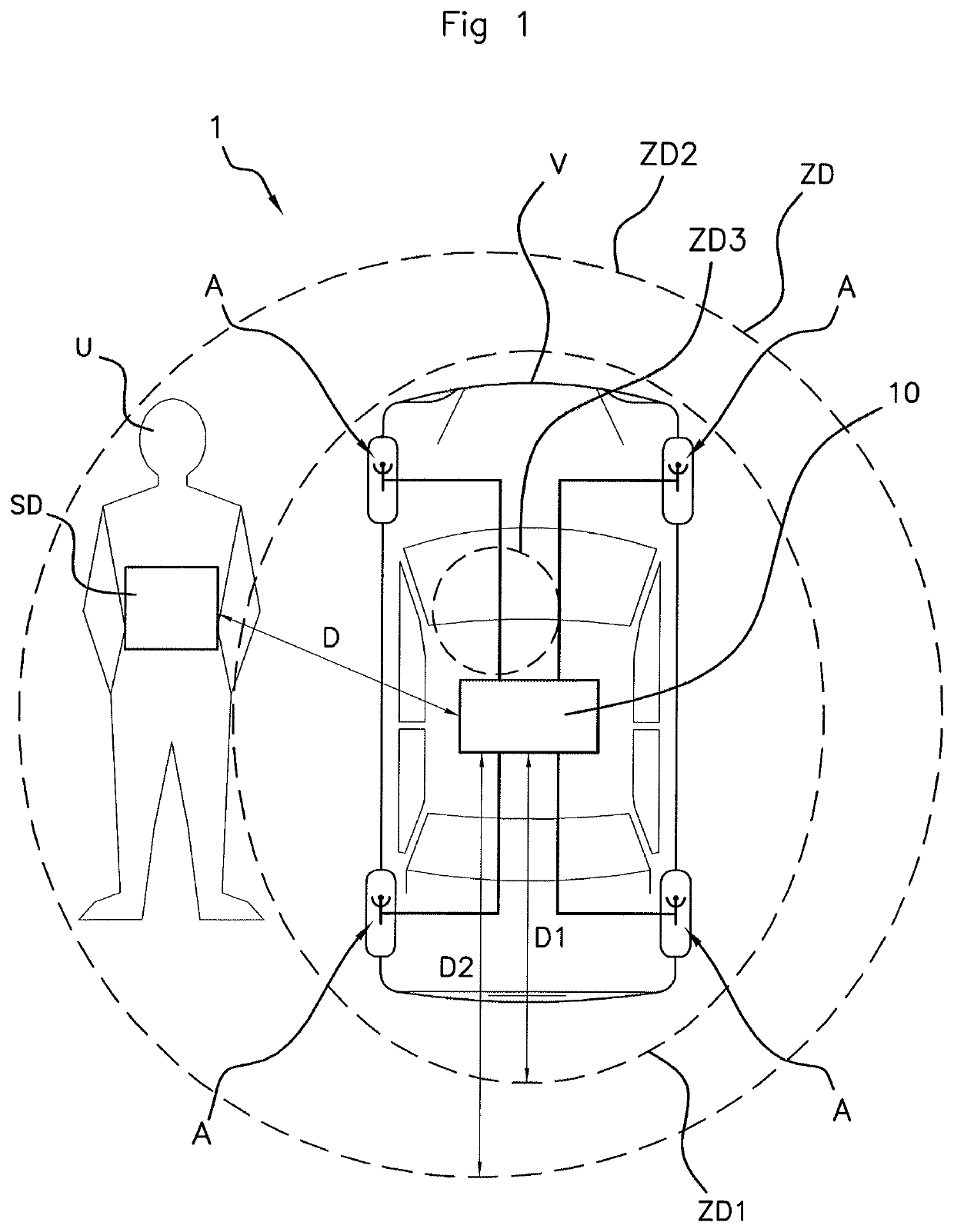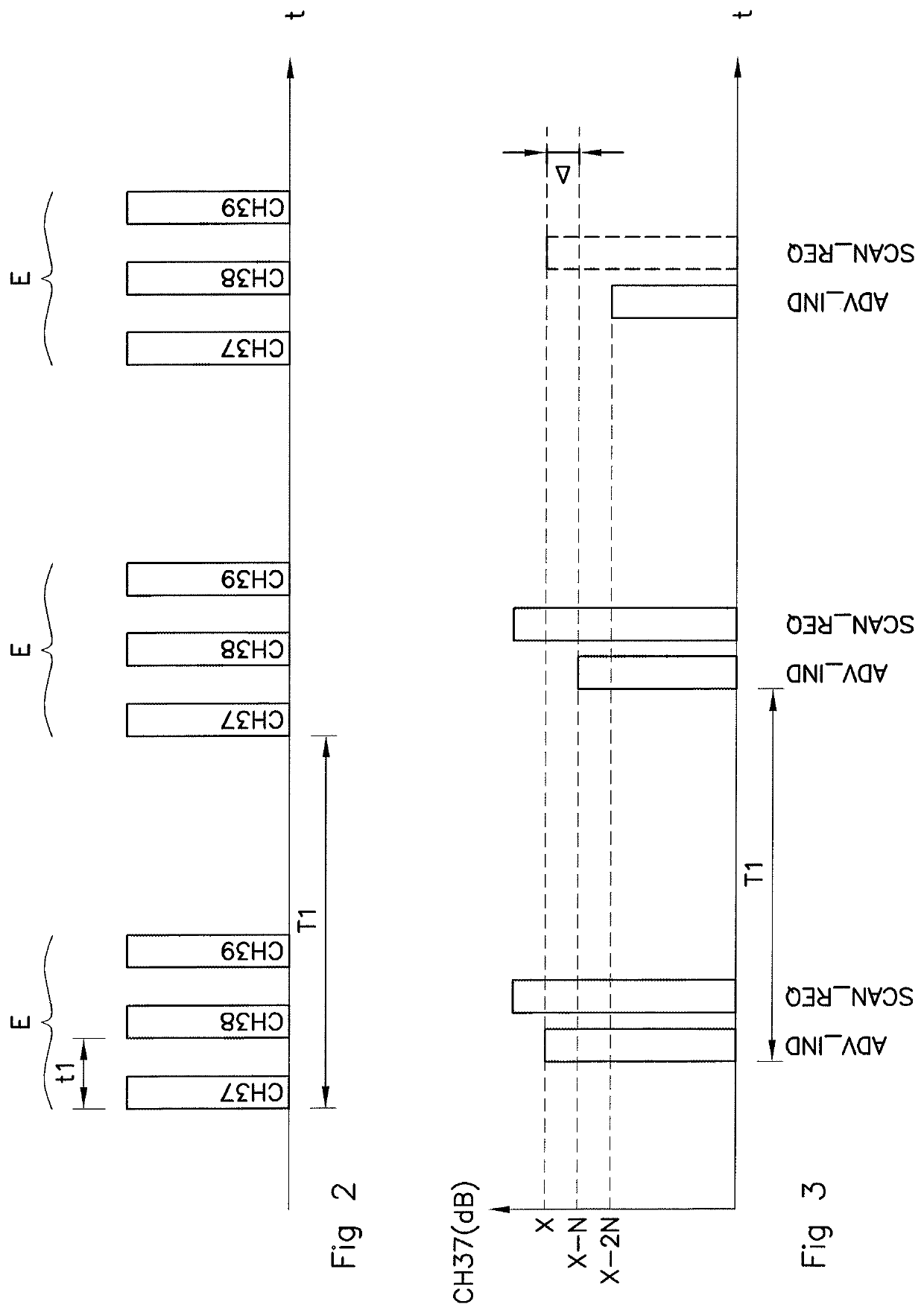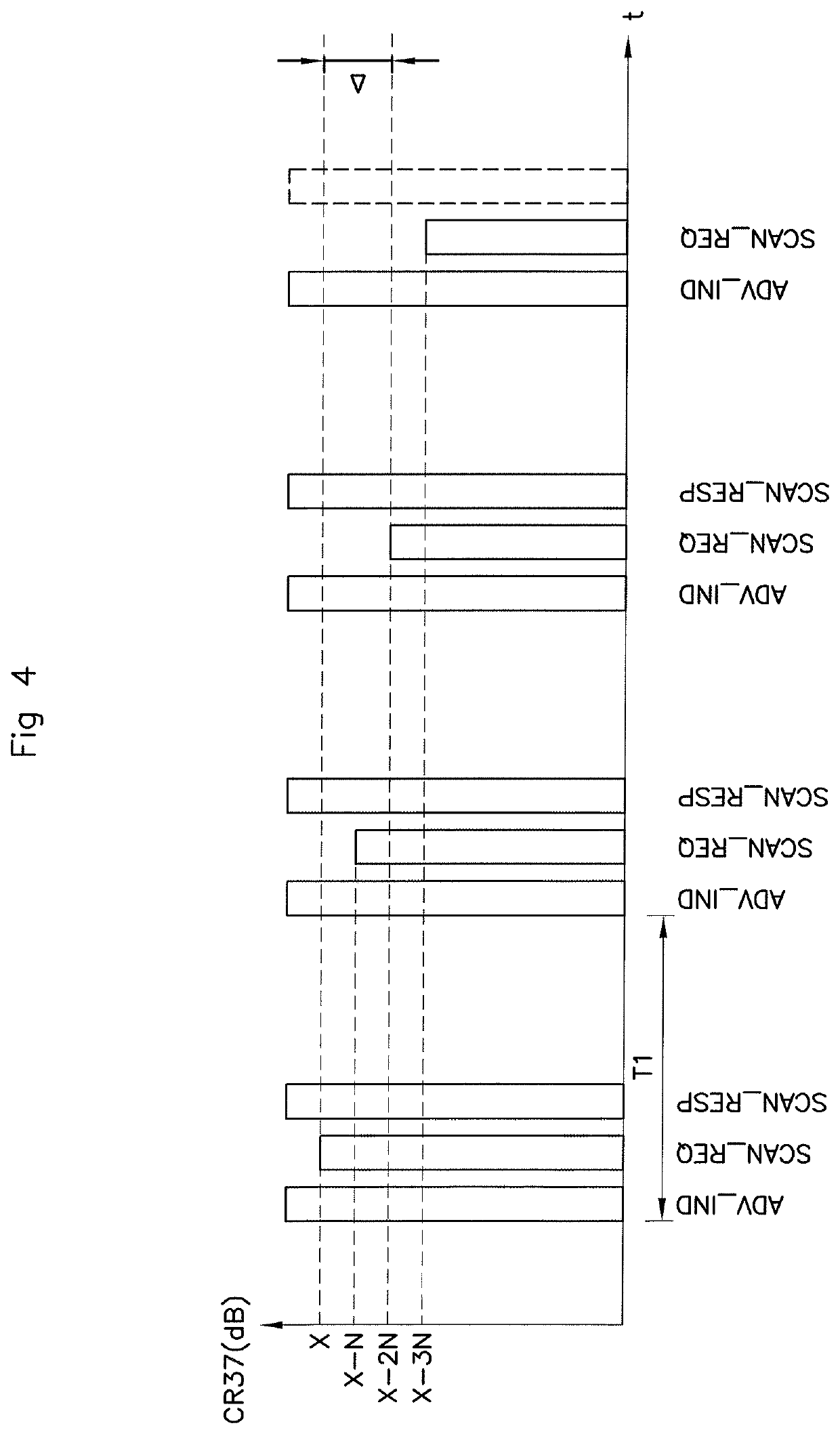Process for detection of a portable user device in a predetermined zone on the inside of or on the outside of a vehicle by ultra high frequency, associated detection device and associated user device
a portable user device and ultra high frequency technology, applied in the field of automobiles, can solve the problems of inability to communicate with the vehicle in rf (, ) and lf (for example, khz)
- Summary
- Abstract
- Description
- Claims
- Application Information
AI Technical Summary
Benefits of technology
Problems solved by technology
Method used
Image
Examples
first embodiment
[0097]In the detection process according to an aspect of the present invention and shown in FIG. 6, the signaling mode is triggered by the detection device 10.
[0098]The detection device 10 transmits the “ADV_IND” signal with a predetermined transmission power, P=X in decibels (step E2) on a first channel CH37, or CH37+j, with, for example, j=0 (step E1).
[0099]In step E3, as long as the detection device 10 is receiving a response signal from the portable device SD, i.e., as long as the detection device 10 is receiving the “SCAN_REQUEST” (or also called “SCAN_REQ”) signal from the portable device SD on the same channel CH37+j, and if in step E4a the response signal “SCAN_REQUEST” has been received on each of the three channels CH37, CH38 and CH39, i.e., if j>2, then[0100]Steps E5b and Ebb: reduction of the transmission power of the “ADV-IND” signal, i.e., P=P−×N, with i=1 and, for example, N=2 dB, and storage of the new transmission power P which is hence reduced by 2 dB in relation t...
second embodiment
[0107]In an aspect of the present invention, and shown in FIG. 7, the signaling mode is triggered by the portable device SD.
[0108]The portable device 10 transmits the “ADV_IND” signal on a first channel CH37+j, for example, j=0 (step E1a) and triggers the starting of a clock, T=0.
[0109]Upon reception of the “ADV_IND” signal, the detection device responds by transmitting a “SCAN_REQUEST” (or “SCAN_REQ”) signal on the same channel at a predetermined transmission power P, P=X (step E2) in decibels;
[0110]In step E3, as long as the detection device 10 is receiving a response signal from the portable device SD, i.e., as long as the detection device 10 is receiving the “SCAN_RESPONSE” (or “SCAN_RESP”) signal from the portable device SD on the same channel CH37+j, in step E4a the response signal “SCAN_RESPONSE” has been received on each of the three channels CH37, CH38 and CH39, i.e., if j>2, then[0111]Steps E5b and Ebb: reduction of the transmission power of the “SCAN_REQUEST” signal, i.e....
PUM
 Login to View More
Login to View More Abstract
Description
Claims
Application Information
 Login to View More
Login to View More - R&D
- Intellectual Property
- Life Sciences
- Materials
- Tech Scout
- Unparalleled Data Quality
- Higher Quality Content
- 60% Fewer Hallucinations
Browse by: Latest US Patents, China's latest patents, Technical Efficacy Thesaurus, Application Domain, Technology Topic, Popular Technical Reports.
© 2025 PatSnap. All rights reserved.Legal|Privacy policy|Modern Slavery Act Transparency Statement|Sitemap|About US| Contact US: help@patsnap.com



